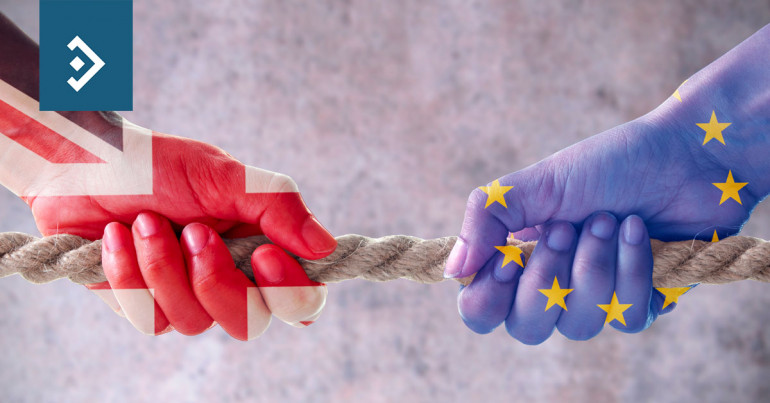
Brexit: Delaying the Inevitable
Morning mid-market rates – The majors
October 9th: Highlights
- No deal is the only outcome
- Producer prices point to further cuts
- Euro treading water but fresh lows beckon
When will no-deal become the only path?
On one side the bureaucratic mess that is Brussels came up against an issue it never expected to face; a nation unwilling to “go with the flow”. On the other side, the UK; eternally conflicted about the benefits of membership unable to quantify those benefits against unregulated immigration putting an immeasurable strain on public services.
On reflection, something MPs have been unwilling to undertake, the two sides would have had to compromise almost to the point of giving the other carte blanche for an amicable settlement to have taken place. The EU with twenty-seven other nations all with varying degrees of commitment to the cause and Brussels trying desperately to show unity in the face of rising populism and the UK torn apart by divisions of nationality among the four nations of the Union and facing widely varying views on the benefits of going it alone.
The UK made a fundamental mistake early in the piece by allowing the decision to fall along Party lines. Inevitably, the opposition saw an opportunity to divide the Government As a strategy, that has borne a rich harvest, far greater than it ever could have imagined. This was, of course, exacerbated by Theresa May’s incredible to decision to call the 2017 election which as it turned out mortally wounded the chances of a deal being done.
Now, with a little over three weeks to go, the two sides are close to admitting that a deal cannot be achieved whether the UK leaves at the end of this month, next January or in five years’ time.
The pound suffered from this dawning revelation yesterday, falling to a low of 1.2194 and closing at 1.2224.
Considering your next transfer? Log in to compare live quotes today.
Future inflation to remain benign
While the more dovish commentators see the need for further rate cuts, the more hawkish can see the slowdown being shallow and the recent rate cuts being reversed as quickly as they were put in place. Successive data releases are doing little to provide clarity and it now remains to be seen if the FOMC, at its meeting in a few weeks errs on the side of caution and cuts again or remains committed to its line that this is merely a mid-cycle adjustment.
Meanwhile, the dollar index gyrates to the rhythm of multiple drivers providing those who crave volatility some relief while those who are trying to put hedging strategies in place find it impossible to find an optimum time to enter the market.
Inflation, as denoted by the Fed’s favoured measure; Personal Consumption Expenditures is inconclusive while the more commonly measured consumer price index hovers near the Fed’s 2% target. Should it remain at or close to that level, the Fed will be hard-pressed to justify a further cut without waiting to see the effect of the cuts it has already made.
Given the number of factors facing the dollar across a wide spectrum of drivers, it is hard to say how far the current correction can go. Yesterday, the index regained the 99 level, reaching 99.26 and closing at 99.14.
Rudderless euro drifting towards parity
Unfortunately, the opposite has been true as the stronger nations have been “dragged down” to the level of the lowest common denominator. If you had asked the German “man in the street” if the cost of their pre-eminent position within the region was worth the economic downturn that has seen Europe’s powerhouse economy fall into what could be a long and painful recession, it is doubtful he would have answered in the affirmative.
The ECB maintains its belief that it creates a monetary policy that is designed to benefit every Eurozone member but that is an impossible goal given the wildly different fiscal policies of the individual nations.
In general, the financial community expected the Eurozone to have a similar structure to the U.S. but while each state sets its own priorities, it exists under the umbrella of a single Federal Government while the Eurozone seems unable or unwilling to take the next step towards Federalism.
Once Brexit is complete (whenever that happens), the Eurozone faces an even bigger issue that will determine its very existence. It cannot survive in its current form which is almost set up to fail. Greater integration is the goal of Emmanuel Macron, but he will face an almost impossible task to convince Italy to cede further control of its finances to a central authority.
The next two years or so will see the major global event being the fight to save the euro from being little more than a costly experiment which had noble goals but ultimately highlighted the economic differences of its members rather than their common goals.
If the U.S. economy manages to avoid slowing to the point where it reaches a recession even if it is shallow, the single currency looks likely to continue to weaken, possibly reaching parity versus the greenback.
That is the longer-term scenario. For now, the euro drifts rudderless, reacting external factors. Yesterday, it reached a low of 1.0940, closing at 1.0950 as it trades in an ever-narrower range.
Have a great day!

About Alan Hill
Alan has been involved in the FX market for more than 25 years and brings a wealth of experience to his content. His knowledge has been gained while trading through some of the most volatile periods of recent history. His commentary relies on an understanding of past events and how they will affect future market performance.”



